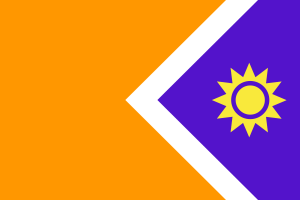Difference between revisions of "Language/Marathi/Vocabulary/Introductions"
m (Quick edit) |
m (Quick edit) |
||
| Line 1: | Line 1: | ||
<span pgnav> | |||
{| class="wikitable pg_template_nav" | |||
|[[Language/Marathi/Vocabulary/Greetings|◀️ Greetings — Previous Lesson]] | |||
|[[Language/Marathi/Grammar/Subject-Object-Verb|Next Lesson — Subject-Object-Verb ▶️]] | |||
|} | |||
</span> | |||
{{Marathi-Page-Top}} | {{Marathi-Page-Top}} | ||
| Line 130: | Line 137: | ||
{{Marathi-Page-Bottom}} | {{Marathi-Page-Bottom}} | ||
<span links></span> | <span links></span> | ||
<span pgnav> | |||
{| class="wikitable pg_template_nav" | |||
|[[Language/Marathi/Vocabulary/Greetings|◀️ Greetings — Previous Lesson]] | |||
|[[Language/Marathi/Grammar/Subject-Object-Verb|Next Lesson — Subject-Object-Verb ▶️]] | |||
|} | |||
</span> | |||
Revision as of 22:06, 2 April 2023
| ◀️ Greetings — Previous Lesson | Next Lesson — Subject-Object-Verb ▶️ |
Introduction
In this lesson, you will learn how to introduce yourself and others in Marathi, including asking and answering questions like "What is your name?" and "Where are you from?" Introducing oneself is the first step to initiating any conversation with a new person, and it is essential to know how to do it in the language you are learning. By the end of this lesson, you will be able to introduce yourself and others in Marathi with ease.
Take a moment to explore these relevant pages as you conclude this lesson: Numbers & Common Verbs.
Vocabulary
Here are some essential Marathi phrases and vocabulary related to introductions:
| Marathi | Pronunciation | English |
|---|---|---|
| नाव काय आहे? | nāva kāy āhe? | What is your name? |
| माझं नाव ... आहे | Mājhaṁ nāva ... āhe | My name is ... |
| तुझं नाव काय आहे? | Tujaṁ nāva kāy āhe? | What is your name? (informal) |
| माझं नावा ... आहे | Mājhaṁ nāvā ... āhe | My name is ... (informal) |
| कुठे आहात? | Kuṭhe āhāt? | Where are you from? |
| पुणे आहे | Puṇe āhe | I am from Pune. |
Grammar
In Marathi, to introduce oneself, you say "My name is ...", which translates to "माझं नाव ... आहे" (Mājhaṁ nāva ... āhe). To introduce someone else, you say "This is ...", which translates to "हा/ही ... आहे" (Hā/hī ... āhe). The word "हा/ही" (Hā/hī) means "this" and changes depending on the gender of the person you are introducing.
To ask someone their name, you say "What is your name?" which translates to "नाव काय आहे?" (Nāva kāy āhe?). If you want to ask it informally, you can say "तुझं नाव काय आहे?" (Tujaṁ nāva kāy āhe?).
To ask someone where they are from, you say "Where are you from?" which translates to "कुठे आहात?" (Kuṭhe āhāt?). In response, you can say "I am from ..." which translates to "... आहे" (āhe).
Here are some examples of simple conversations in Marathi:
- Example 1:
Person A: नमस्ते, माझं नाव रवि आहे. तुझं नाव काय आहे? (Namaste, mājhaṁ nāva Ravi āhe. Tujaṁ nāva kāy āhe?)
Person B: माझं नावा सीता आहे. मी मुंबईमध्ये राहतो. (Mājhaṁ nāvā Sītā āhe. Mī Mumbaimadhye rāhto.)
Translation:
Person A: Hello, my name is Ravi. What is your name? Person B: My name is Sita. I live in Mumbai.
- Example 2:
Person A: हा आहे अजय, माझं ग्रुपमध्ये आहे. तो पुण्यात राहतो. (Hā āhe Ajay, mājhaṁ grupmadhye āhe. To Puṇyāt rāhto.)
Person B: नमस्ते, माझं नाव मधु आहे. मी नाशिकमध्ये राहते. (Namaste, mājhaṁ nāva Madhu āhe. Mī Nāśikmadhye rāhte.)
Translation:
Person A: This is Ajay. He is in my group. He lives in Pune. Person B: Hello, my name is Madhu. I live in Nashik.
Practice
Here are some practice exercises to test your understanding of the lesson:
- Exercise 1: Introduce yourself to a Marathi speaker and ask their name and where they are from.
- Exercise 2: Introduce two people of the same or opposite gender to each other and ask them to introduce themselves.
- Exercise 3: Listen to an audio clip of someone introducing themselves and answer questions related to their name and where they are from.
Tips
- Use the appropriate level of formality when introducing yourself or someone else. Marathi has both formal and informal ways of addressing people.
- To show interest in someone, ask follow-up questions about their name and where they are from.
- Don't be afraid to make mistakes. It's okay to stumble over your words while learning a new language, and most people will appreciate your effort to speak their language.
Conclusion
You've learned how to introduce yourself and others in Marathi in this lesson. Knowing how to initiate a conversation is a valuable skill, and you've taken the first step towards doing so. Practice these phrases with a native speaker, and you'll be able to carry on basic conversations in Marathi in no time.
Finished this lesson? Check out these related lessons: Accommodation Vocabulary & Languages (bhasha भाषा).
Videos
2nd English | Topic#01 | Introduction Word Building | Marathi Medium
How to Introduce Yourself in Marathi - YouTube
2nd English | Topic#01 | Introduction Bounce a Ball | Marathi Medium
Other Lessons
- Family
- Days (var वार)
- Language learning resources
- Multilingualism
- Love
- Common Verbs
- Seasons
- Common Adjectives
- Fruits
Sources
- Marathi language - Wikipedia
- introduction meaning in Marathi | introduction translation in Marathi ...
| ◀️ Greetings — Previous Lesson | Next Lesson — Subject-Object-Verb ▶️ |
